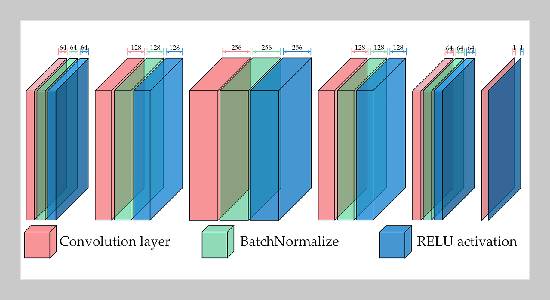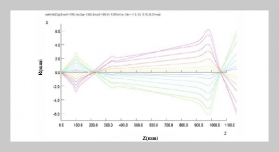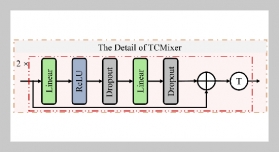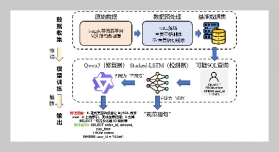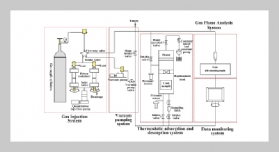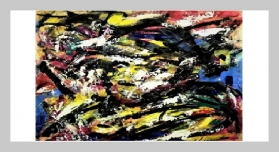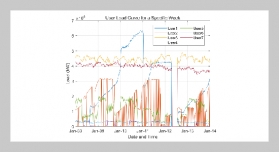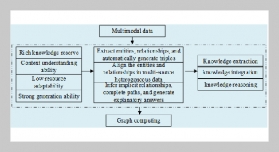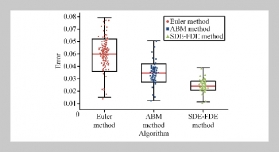- [1] R. Brinkmann. The art and science of digital compositing: Techniques for visual effects, animation and motion graphics. Morgan Kaufmann, 2008.
- [2] N. Xu, B. Price, S. Cohen, and T. Huang. “Deep image matting”. In: Proceedings of the IEEE conference on computer vision and pattern recognition, 2970–2979. DOI: 10.1109/CVPR.2017.41.
- [3] G. Park, S. Son, J. Yoo, S. Kim, and N. Kwak. “Matteformer: Transformer-based image matting via priortokens”. In: Proceedings of the IEEE/CVF Conference on Computer Vision and Pattern Recognition, 11696–11706. DOI: 10.1109/CVPR52688.2022.01140.
- [4] S. Lin, A. Ryabtsev, S. Sengupta, B. L. Curless, S. M. Seitz, and I. Kemelmacher-Shlizerman. “Real-time high-resolution background matting”. In: Proceedings of the IEEE/CVF Conference on Computer Vision and Pattern Recognition, 8762–8771. DOI: 10.1109/CVPR46437.2021.00865.
- [5] C. Henry and S.-W. Lee, (2019) “Automatic trimap generation and artifact reduction in alpha matte using unknown region detection" Expert Systems with Applications 133: 242–259. DOI: 10.1016/j.eswa.2019.05.019.
- [6] J. Li, G. Yuan, and H. Fan, (2020) “Robust trimap generation based on manifold ranking" Information Sciences 519: 200–214. DOI: 10.1016/j.ins.2020.01.017.
- [7] J. Li, J. Zhang, S. J. Maybank, and D. Tao, (2022) “Bridging composite and real: towards end-to-end deep image matting" International Journal of Computer Vision 130(2): 246–266. DOI: 10.1007/s11263-021-01541-0.
- [8] Z. Ke, J. Sun, K. Li, Q. Yan, and R. W. Lau. “Modnet: Real-time trimap-free portrait matting via objective decomposition”. In: Proceedings of the AAAI Conference on Artificial Intelligence. 36, 1140–1147. DOI: 10.48550/arXiv.2011.11961.
- [9] A. Bilal, L. Zhu, A. Deng, H. Lu, and N. Wu, (2022) “AI-based automatic detection and classification of diabetic retinopathy using U-Net and deep learning" Symmetry 14(7): 1427. DOI: 10.3390/sym14071427.
- [10] A. Bilal, G. Sun, S. Mazhar, A. Imran, and J. Latif, (2022) “A Transfer Learning and U-Net-based automatic detection of diabetic retinopathy from fundus images" Computer Methods in Biomechanics and Biomedical Engineering: Imaging Visualization 10(6): 663–674. DOI: 10.1080/21681163.2021.2021111.
- [11] A. Bilal, M. Shafiq, F. Fang, M. Waqar, I. Ullah, Y. Y. Ghadi, H. Long, and R. Zeng, (2022) “IGWO-IVNet3: DL-Based Automatic Diagnosis of Lung Nodules Using an Improved Gray Wolf Optimization and InceptionNetV3" Sensors 22(24): 9603. DOI: 10.3390/s22249603.
- [12] J. Li, J. Zhang, and D. Tao. “Deep automatic natural image matting”. In: Proceedings of International Joint Conferences on Artificial Intelligence Organization, Montreal-themed virtual reality, 800–806. DOI: 10.48550/arXiv.2107.07235.
- [13] E. K. Aghdam, R. Azad, M. Zarvani, and D. Merhof, (2022) “Attention swin u-net: Cross-contextual attention mechanism for skin lesion segmentation" arXiv preprint arXiv:2210.16898: DOI: 10.1007/978-3-031-25066-8_9.
- [14] H. Cao, Y. Wang, J. Chen, D. Jiang, X. Zhang, Q. Tian, and M. Wang. “Swin-unet: Unet-like pure transformer for medical image segmentation”. In: European conference on computer vision. Springer, 205–218.
- [15] Z. Liu, H. Mao, C.-Y. Wu, C. Feichtenhofer, T. Darrell, and S. Xie. “A convnet for the 2020s”. In: Proceedings of the IEEE/CVF conference on computer vision and pattern recognition, 11976–11986. DOI: 10.48550/arXiv.2201.03545.
- [16] J. Xiao, S. A. Suab, X. Chen, C. K. Singh, D. Singh, A. K. Aggarwal, A. Korom, W. Widyatmanti, T. H. Mollah, and H. V. T. Minh, (2023) “Enhancing assessment of corn growth performance using unmanned aerial vehicles (UAVs) and deep learning" Measurement 214: 112764. DOI: 10.1016/j.measurement.2023.112764.
- [17] R. Thukral, A. Arora, A. Kumar, and Gulshan. “Denoising of thermal images using deep neural network”. In: Proceedings of International Conference on Recent Trends in Computing: ICRTC 2021. Springer, 827–833. DOI: 10.1007/978-981-16-7118-0_70.
- [18] K. He, X. Zhang, S. Ren, and J. Sun. “Deep residual learning for image recognition”. In: Proceedings of the IEEE conference on computer vision and pattern recognition, 770–778. DOI: 10.48550/arXiv.1512.03385.
- [19] A. G. Howard, M. Zhu, B. Chen, D. Kalenichenko, W. Wang, T. Weyand, M. Andreetto, and H. Adam, (2017) “Mobilenets: Efficient convolutional neural networks for mobile vision applications" arXiv preprint arXiv:1704.04861: DOI: 10.48550/arXiv.1704.04861.
- [20] M. Tan and Q. Le. “Efficientnet: Rethinking model scaling for convolutional neural networks”. In: Proceedings of International conference on machine learning. PMLR, 6105–6114. DOI: 10.4236/ojmsi.2021.93017.
- [21] I. Radosavovic, R. P. Kosaraju, R. Girshick, K. He, and P. Dollár. “Designing network design spaces”. In: Proceedings of the IEEE/CVF conference on computer vision and pattern recognition, 10428–10436. DOI: 10.48550/arXiv.2003.13678.
- [22] Z. Liu, H. Hu, Y. Lin, Z. Yao, Z. Xie, Y. Wei, J. Ning, Y. Cao, Z. Zhang, and L. Dong. “Swin transformer v2: Scaling up capacity and resolution”. In: Proceedings of the IEEE/CVF conference on computer vision and pattern recognition, 12009–12019. DOI: 10.48550/arXiv.1405.0312.
- [23] Z. Liu, Y. Lin, Y. Cao, H. Hu, Y. Wei, Z. Zhang, S. Lin, and B. Guo. “Swin transformer: Hierarchical vision transformer using shifted windows”. In: Proceedings of the IEEE/CVF international conference on computer vision, 10012–10022. DOI: 10.48550/arXiv.2103.14030.
- [24] R. Mechrez, I. Talmi, and L. Zelnik-Manor. “The contextual loss for image transformation with nonaligned data”. In: Proceedings of the European conference on computer vision (ECCV), 768–783. DOI: 10.48550/arXiv.1803.02077.
- [25] T.-Y. Lin, M. Maire, S. Belongie, J. Hays, P. Perona, D. Ramanan, P. Dollár, and C. L. Zitnick. “Microsoft coco: Common objects in context”. In: Proceedings of European conference on computer vision. Springer, 740– 755. DOI: 10.48550/arXiv.1405.0312.
- [26] S. Chauhan, M. Singh, and A. K. Aggarwal, (2021) “Data science and data analytics: artificial intelligence and machine learning integrated based approach" Data Science and Data Analytics: Opportunities and Challenges 1: DOI: 10.1201/9781003111290.
- [27] A. Aggarwal, (2020) “Enhancement of GPS position accuracy using machine vision and deep learning techniques" Journal of Computer Science 16(5): 651–659. DOI: 10.3844/jcssp.2020.651.659.
- [28] A. Kaur, A. P. S. Chauhan, and A. K. Aggarwal. “Machine learning based comparative analysis of methods for enhancer prediction in genomic data”. In: Proceedings of 2019 2nd International Conference on Intelligent Communication and Computational Techniques. IEEE, 142–145. DOI: 10.1109/ICCT46177.2019.8969054.
- [29] A. Kaur, A. P. S. Chauhan, and A. K. Aggarwal, (2022) “Dynamic deep genomics sequence encoder for managed file transfer" IETE Journal of Research: 1–13. DOI: 10.1080/03772063.2022.2060869.
- [30] C. Rhemann, C. Rother, J. Wang, M. Gelautz, P. Kohli, and P. Rott. “A perceptually motivated online benchmark for image matting”. In: Proceedings of 2009 IEEE conference on computer vision and pattern recognition. IEEE, 1826–1833. DOI: 10.1109/CVPR.2009.5206503.


